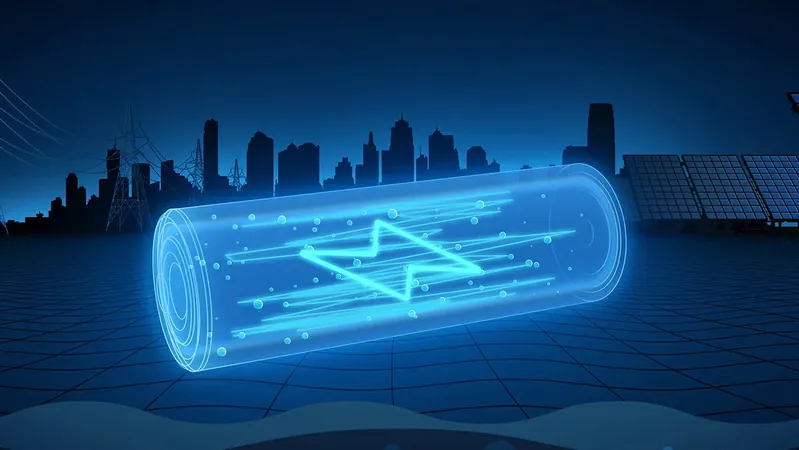
Breakthrough Research on Aqueous Batteries Set to Revolutionize Clean Energy!
2024-11-12
Author: Sophie
Introduction
In a transformative move for clean energy storage, UC Santa Barbara’s esteemed materials faculty members, Raphaële Clément and Ram Seshadri, are joining forces with a vast network of researchers across the United States. This collaboration is part of a groundbreaking initiative backed by the U.S. Department of Energy (DOE), which has allocated a generous five-year grant of $125 million to propel the next generation of battery technologies beyond our current reliance on lithium-ion (Li-ion) batteries.
Collaboration and Goals
The initiative comprises two major teams, with one spearheaded by Argonne National Laboratory in Illinois and the other by Stanford University/SLAC. Their shared mission? To innovate scientific principles aimed at decarbonizing transportation and enhancing the integration of clean energy into the nation's electricity grid.
Aqueous Battery Consortium
At the heart of this endeavor lies the Aqueous Battery Consortium (ABC), a vanguard group led by Stanford University/SLAC that includes 31 co-principal investigators from 15 different institutions across the U.S. and Canada. The consortium is poised to establish a solid scientific foundation for the large-scale rollout of aqueous batteries, which are increasingly seen as a viable solution for long-duration grid storage. Importantly, these developments prioritize the use of Earth-abundant materials, effectively addressing concerns around supply-chain vulnerabilities.
Future Perspectives
Rechargeable batteries, such as Li-ion and lead-acid variants, have already made a significant economic impact; however, future battery technologies must aim for enhanced energy density, safety, and affordability. One key aspect is to utilize a diverse range of inexpensive raw materials to ensure accessibility and scalability.
Expert Insights
“Our objective is to provide an affordable, sustainable, and safe energy storage solution for the grid through water-based chemistries,” explained Clément. “A major hurdle we face is engineering a high-voltage battery that can prevent water electrolysis—the process where water molecules break down into hydrogen and oxygen gas, which ultimately leads to battery failure. Our focus will involve utilizing nuclear magnetic resonance spectroscopy (NMR), similar to MRI technology, to deepen our understanding of how reactions occur during charging and discharging. Additionally, we aim to discover ways to safeguard water molecules by altering the electrolytic solution’s composition, thus improving both energy density and cycling performance.”
Seshadri added, “We are thrilled to broaden our range of experimental tools to tackle the formidable challenge of crafting aqueous batteries suitable for grid-scale energy storage. Employing advanced techniques such as operando diagnostics—where we analyze material properties in real-time during the charging and discharging process—will be crucial. Our facilities at UCSB play a pivotal role in pushing forward this ambitious research.”
Inclusivity in Research
Crucially, this initiative also emphasizes inclusivity. Notably, several participating institutions include Historically Black Colleges and Universities (HBCUs) and various Minority Serving Institutions. This focus on diverse representation illustrates a commitment not only to innovation in energy storage but also to developing a skilled workforce from varied backgrounds in the field.
Conclusion
As the race for sustainable energy solutions intensifies, advancements in aqueous batteries could not only offer game-changing storage options but also represent a significant leap towards a greener future. Keep an eye on this developing story—who knows how it might change the energy landscape?









 Brasil (PT)
Brasil (PT)
 Canada (EN)
Canada (EN)
 Chile (ES)
Chile (ES)
 España (ES)
España (ES)
 France (FR)
France (FR)
 Hong Kong (EN)
Hong Kong (EN)
 Italia (IT)
Italia (IT)
 日本 (JA)
日本 (JA)
 Magyarország (HU)
Magyarország (HU)
 Norge (NO)
Norge (NO)
 Polska (PL)
Polska (PL)
 Schweiz (DE)
Schweiz (DE)
 Singapore (EN)
Singapore (EN)
 Sverige (SV)
Sverige (SV)
 Suomi (FI)
Suomi (FI)
 Türkiye (TR)
Türkiye (TR)